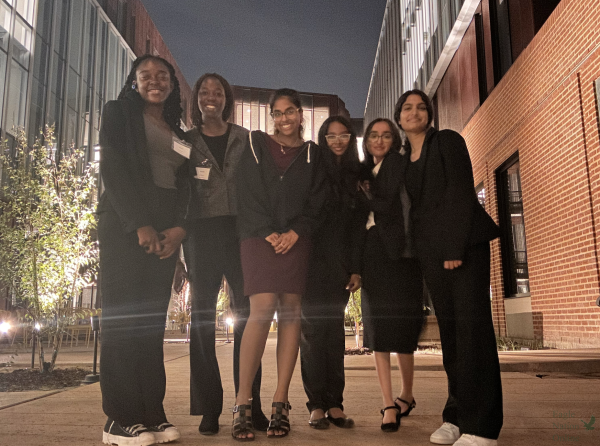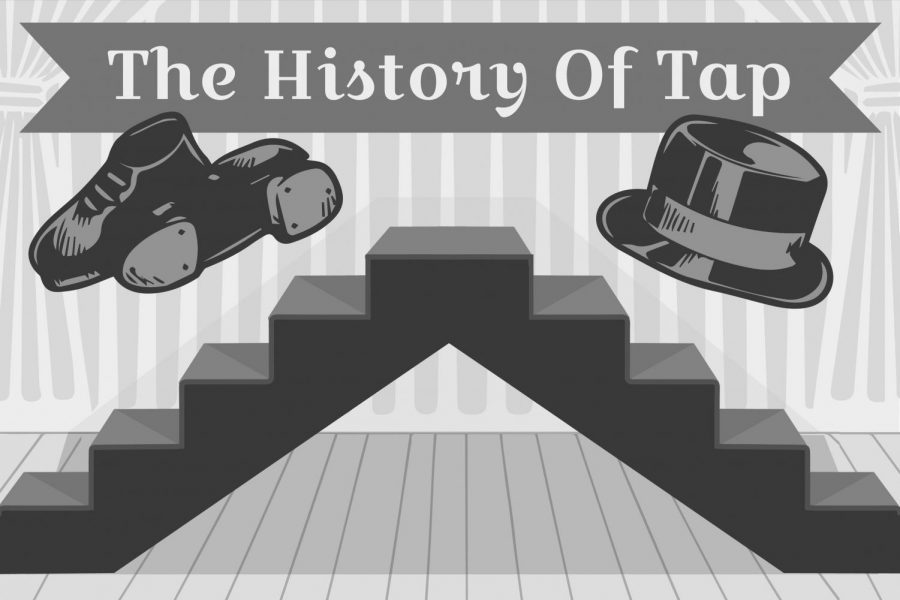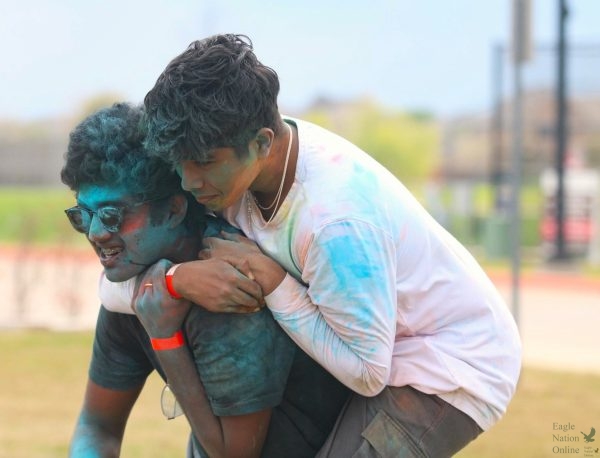Column: Tap dance honors Black history, traditions
Black History Month takes place throughout the month of February. In this graphic design by senior Mark Chrissan, tap shoes and a top hat hover above a set of stairs, made famous by the tap dancer Bill Bojangles Robinson. In this article, columnist Maddie Moats runs through a summary of tap history and its significance to African American history.
When thinking of tap dance, one might recall Broadway, Fred Astaire or even a younger sibling at a childhood dance recital. While modern depictions of tap dance vary, the origins of this dance style hold a unique and widely forgotten history, one rooted in African and Irish traditional dances and the Atlantic slave trade. The annual observance of Black History Month in February aims to remember and honor Black citizens and accomplishments that changed the course of history, and tap dance should be no exception to this holiday.
Tap dance is one of few dance styles uniquely indigenous to America, dating back as early as the 1500s. While enslaved people were taken from Africa to the Americas through what was called the “middle passage,” they danced to the music of upturned buckets and other objects found on the ships. In the 1700s and 1800s, enslaved Africans performed African percussive dances that transformed into new African American styles, such as the Juba, where dancers moved in a circle, shuffled their feet and clapped rhythmically. This dancing is important because it allowed enslaved people to remain connected to their culture and cope with the conditions they faced in America. During the same time period, many Irish Americans were living as indentured servants, and historians believe they exchanged dancing styles in the early 1600s on American plantations. The style of the hybridized African percussive dances and Irish clogging became known as “jigging” by the 1800s.
The history of tap dance took a turn in the 1800s, and minstrel shows became the main spectacle of tapping. Minstrel shows were a form of racist entertainment in which white performers would dress up in blackface and depict Black stereotypes in the form of songs, jokes and dances for an audience. Although the minstrel shows were performed mostly by white impersonators, a few Black dancers such as William Henry Lane maintained some integrity to the African American origins of tap dancing through the shows. After the Civil War, more African Americans had access to the minstrel show and a heavier focus was put on the technique of tap dancing, and new steps emerged.
Throughout the early to mid-1900s, many African Americans found opportunities on-stage through tap dance, but off-stage, they lived segregated under Jim Crow.
— Maddie Moats
At the turn of the century, tap carried through to vaudeville shows in the early 1900s, which featured a variety of individual acts. Jazz music was emerging at this time, and tap evolved alongside ragtime rhythms, becoming more intricate and musical. In the 1920s, jazz exploded in popularity, and tap dancing often accompanied jazz shows. Eventually, tap dance made its way to Broadway, where its popularity was unmatched. During this time, Black tap dancers such as Bill Bojangles Robinson with his famed “Stair Dance” and Peg Leg Bates stole the stage and earned a reputation on Broadway. Tap dance eventually made its way to film in the 1930s and 40s, where it was immortalized in Hollywood movies. In the film “The Little Colonel,” starring Bill Robinson and Shirley Temple, the two dancers popularized the stair dance that Robinson debuted on Broadway.
Throughout the early to mid-1900s, many African Americans found opportunities on-stage through tap dance, but off-stage, they lived segregated under Jim Crow. Despite the fame and honor that came with their careers, many esteemed Black dancers still faced racism, hate and financial setbacks. Black performers were not paid as much as white performers, and their contributions were often forgotten or undermined. By the time the civil rights movement picked up speed, tap dance already had significantly declined in popularity, leaving its biggest stars without the true chance of equality among their white counterparts.
Although tap never reached the same height as it did in the early 20th century, several tap movies and documentaries came out in the 1970s and 80s, serving as a renaissance for interest in tap dance. Today, tap continues to evolve across the United States with tap masters like Savion Glover celebrating the art and keeping it alive by reaching audiences and teaching a new generation of tap dancers. Although tap dance was born out of slavery and oppression, the beauty of it has an undeniable appeal that played an integral role in both Black history and American history in general, and it is important to remember and honor the people that evolved tap into what it is today.
Your donation will support the student journalists of Prosper High School. Your contribution will allow us to purchase equipment and cover our annual website hosting costs.


















